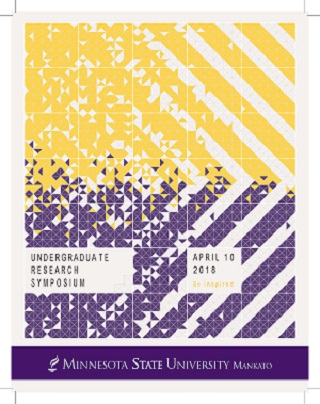Diversity and Amalgamation of Indian Subcontinent Through Wall Throw Clay Art : A Cultural Perspective
Location
CSU 255
Start Date
10-4-2018 11:05 AM
End Date
10-4-2018 12:05 PM
Student's Major
Art
Student's College
Arts and Humanities
Mentor's Name
Todd Shanafelt
Mentor's Department
Art
Mentor's College
Arts and Humanities
Description
Ceramics using clay is a traditional process which uses hand building and wheel throw. These processes however involve a lot of steps like the use of pug to make clay, wheel and kilns. All these steps are energy intensive and require lot of electricity and time. Art has a deeper meaning which should not depend on resources like electricity to express itself. In third world countries, electricity is a very expensive and scarce resource. Thus, a new kind of ceramic art was developed in India by tribal and villagers which uses a special type of clay which can be “thrown” on the wall and shaped by hand. This clay does not require any kiln to dry (can be dried in sun) and form and thus does not need any electricity. The clay is completely organic and uses no harmful chemicals. In this project, I recreated this clay and art form (called “wall throw”) and depicted the multicultural and diverse culture of India in a novel manner. My art will show the different prints and motifs used in the architecture, clothes and jewelry of the different regions of India.
Diversity and Amalgamation of Indian Subcontinent Through Wall Throw Clay Art : A Cultural Perspective
CSU 255
Ceramics using clay is a traditional process which uses hand building and wheel throw. These processes however involve a lot of steps like the use of pug to make clay, wheel and kilns. All these steps are energy intensive and require lot of electricity and time. Art has a deeper meaning which should not depend on resources like electricity to express itself. In third world countries, electricity is a very expensive and scarce resource. Thus, a new kind of ceramic art was developed in India by tribal and villagers which uses a special type of clay which can be “thrown” on the wall and shaped by hand. This clay does not require any kiln to dry (can be dried in sun) and form and thus does not need any electricity. The clay is completely organic and uses no harmful chemicals. In this project, I recreated this clay and art form (called “wall throw”) and depicted the multicultural and diverse culture of India in a novel manner. My art will show the different prints and motifs used in the architecture, clothes and jewelry of the different regions of India.
Recommended Citation
Agarwal, Shveta. "Diversity and Amalgamation of Indian Subcontinent Through Wall Throw Clay Art : A Cultural Perspective." Undergraduate Research Symposium, Mankato, MN, April 10, 2018.
https://cornerstone.lib.mnsu.edu/urs/2018/oral-session-06/1



